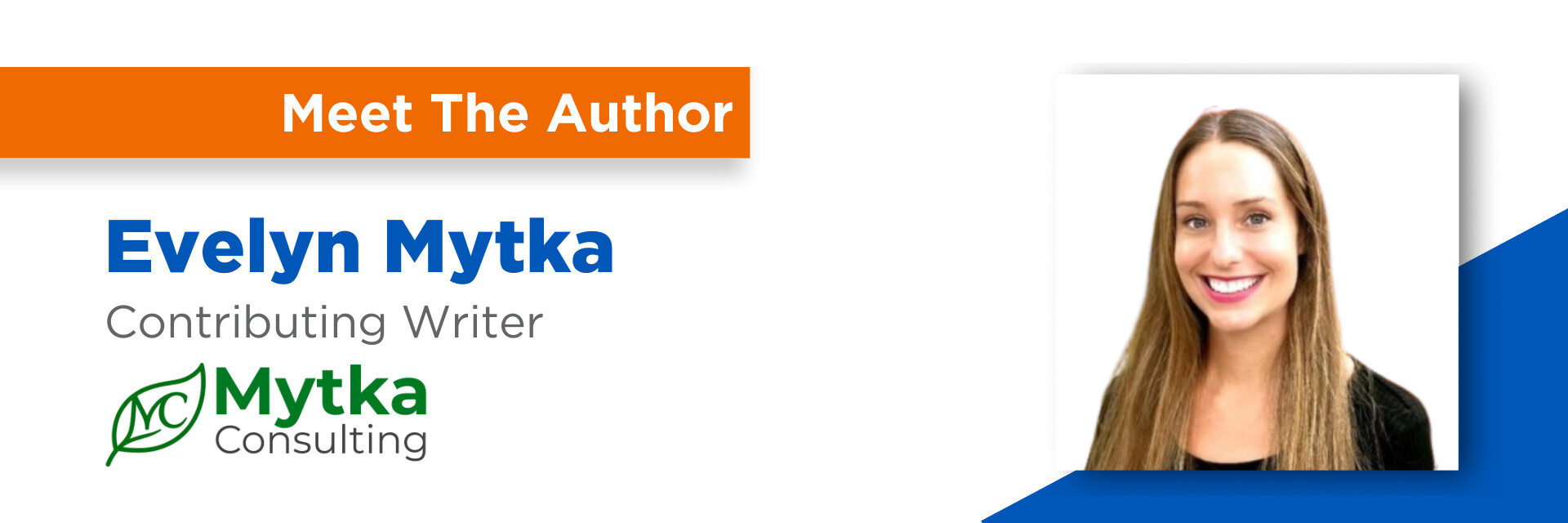Written by Evelyn Mytka, Contributing Writer
Starting a SaaS business in Alberta means delivering your product entirely online rather than from a shelf or a storefront. You are offering a service through software, such as online booking platforms, accounting tools, or project management systems. SaaS, short for Software as a Service, is a business model where customers subscribe to software instead of purchasing and installing it. This guide walks you through what you need to know to get started, from legal structure and compliance to pricing, growth, and funding options in Alberta.
Disclaimer: This article is for informational purposes only and is not intended as legal, tax, or financial advice. Always consult a qualified professional for guidance specific to your business.
1. Validate Your Idea and Identify Your Niche
Before you start writing code or setting up servers, take time to research your market.
- Start with a real problem. The best SaaS ideas solve frustrations that already exist in your daily life or industry. Talk to people who deal with that problem often to understand how software could make their work easier. Alberta’s business community spans energy, construction, tech, and professional services. Find out where software tools are outdated or inefficient and validate that your solution fills a gap.
- Understand the difference between horizontal and vertical SaaS.
- A horizontal SaaS product serves a wide range of industries. Think of tools like accounting software, email marketing platforms, or project management systems that can be used by almost any type of business. Horizontal SaaS can reach a larger market but faces more competition.
- A vertical SaaS product, on the other hand, focuses on one specific industry. For example, software for construction project scheduling, veterinary clinic management, or restaurant reservations. By specializing, you can tailor your features, language, and pricing to the exact needs of that industry, making it easier to stand out.
- Study your competition. Search for other SaaS products solving similar problems. Take note of their pricing, reviews, and target markets. Understanding what competitors do well (and where they fall short!) can help you identify your advantage. Need help with market research? Connect with a Business Link Strategist today.
- Build a minimum viable product (MVP). Test your core features, gather feedback, and refine your pricing and design early.
2. Choose appropriate business structure in Alberta
Once you have validated your idea, the next step is to choose a legal structure for your business. Your choice affects how you pay taxes, your personal liability, and how investors see your company.
- Sole proprietorship. This is the simplest way to start. You operate the business under your own name or a registered trade name and report income through your personal tax return. It is easy to set up but offers no separation between personal and business liability.
- Partnership. If you are building your SaaS business with one or more co-founders, you can form a partnership. Each partner contributes to the business and shares in profits, losses, and decision-making. Partnerships should have a written agreement that clearly defines roles and responsibilities.
- Corporation. Many SaaS founders choose to incorporate, either provincially in Alberta or federally through Corporations Canada. Incorporation creates a separate legal entity, which means your business, not you personally, is responsible for debts and liabilities. It also makes it easier to raise investment or issue shares if you plan to grow or attract outside funding.
- In Alberta, you can incorporate online through authorized registry agents. You will need to select a unique business name, complete a NUANS name search, and file articles of incorporation.
- Registering your business. Regardless of structure, you will need to register your business name, obtain a Business Number (BN) from the Canada Revenue Agency, and set up accounts for GST once your revenue exceeds the $30,000 threshold.
Choosing the right structure depends on your goals, growth plans, and risk tolerance. Learn more with our Choosing a Business Structure resource.
3. Regulatory / legal considerations specific to SaaS
Operating a SaaS means dealing with a few regulatory, contract and compliance obligations:
- SaaS agreements need to clearly define service level agreements (SLAs), uptime commitments, termination clauses, data rights, privacy, intellectual property. Without clarity, you could run into disputes or liabilities.
- Data protection: SaaS often collects or processes personal or customer data. You must ensure compliance with federal privacy laws as well as provincial ones.
- Industry-specific regulations. Depending on the industry your SaaS serves, you may also need to follow sector-specific rules for how data is stored and shared. For example, healthcare software must meet strict privacy and data-handling standards that differ from those in retail or construction. When in doubt, consult a legal expert who understands your target industry.
- For digital/cross-border services: even if you serve customers outside Alberta or Canada, there are specific rules about where the supply is considered “made” and how taxes apply.
- Protect your intellectual property, such as your code, brand name, and logo, through trademarks or copyrights.
4. Tax and sales tax (GST / digital services)
Revenue and tax compliance are key:
- SaaS (software subscriptions, hosting, digital services) is treated as a taxable supply under Canada’s GST/HST regimes.
- Once your business exceeds a threshold of $30,000 in taxable income in a 12-month period (or four consecutive quarters), you must register for GST/HST.
- If your SaaS business charges subscriptions to customers in Alberta, you only need to collect the federal 5% GST because Alberta has no provincial sales tax. If you serve customers in other provinces or territories, you’ll need to determine their province and apply tax accordingly. If you sell subscriptions to customers outside Canada, you usually do not charge GST/HST.
- Keep your records organized! Maintain clear invoices and transaction records showing where each customer is located.
5. Build Your Product and Tech Stack
Once you have validated your idea and set up your business structure, it is time to turn your concept into a working product. This stage can be exciting and overwhelming, so focus on building efficiently and solving your customer’s main problem first.
- Start with your core features. Your software should address one key pain point before adding extras. A streamlined first version helps you stay on budget and collect meaningful user feedback early on.
- Choose your tech stack carefully. A tech stack refers to the combination of tools, programming languages, and hosting platforms that power your software. If you are not a developer, consider hiring a local contractor, partnering with a technical co-founder, or using a reputable development agency.
- Use a reliable cloud infrastructure. Most SaaS businesses host their products on platforms like Amazon Web Services (AWS), Google Cloud, or Microsoft Azure. Cloud hosting allows you to scale easily as your user base grows without maintaining physical servers.
- Prioritize data security. Use strong encryption, secure login systems, and regular data backups. Customers are trusting you with their information, so protecting it builds credibility and prevents potential legal issues.
- Focus on user experience (UX). A clean, intuitive interface can set your SaaS apart. Test your design with real users and make adjustments that simplify navigation, speed, and onboarding.
- Document everything. Keep track of your codebase, processes, and decision-making. Documentation makes it easier to bring on new team members or external developers later.
6. Plan Your Finances
SaaS businesses are unique because most of their revenue comes from recurring subscriptions instead of one-time sales. That can make income steadier over time, but it also means you will need to manage upfront costs carefully before those subscriptions start adding up.
- Estimate your startup costs. These may include software development, hosting fees, design, marketing, and legal expenses for contracts and incorporation. Because SaaS products live online, you will not have physical inventory or a storefront, but your upfront costs can still be significant.
- Track your recurring expenses. Expect ongoing costs for cloud hosting, software tools, technical support, updates, and data security. Plan for these monthly or annual expenses so you can maintain service reliability.
- Forecast your revenue. Since SaaS relies on recurring payments, use key performance metrics like:
- MRR (Monthly Recurring Revenue): How much predictable revenue you generate each month.
- Churn rate: The percentage of customers who cancel their subscriptions.
- LTV (Customer Lifetime Value): The total revenue you can expect from each customer before they leave.
- CAC (Customer Acquisition Cost): The amount you spend to attract each new customer.
- Build a financial cushion. It can take time to reach profitability in SaaS, especially while you build your user base. Keep enough savings or investment funding to cover at least six to twelve months of operating costs.
- Explore funding options. Alberta has several programs that support tech innovation, including grants and tax incentives. Look into:
- Alberta Innovates has a comprehensive list of funding opportunities for early-stage tech funding.
- The Scientific Research and Experimental Development (SR&ED) Tax Credit for eligible R&D work.
- Traditional small business loans or angel investors if you are ready to scale.
- Keep financial records organized. Use accounting software to track expenses, income, and taxes. Accurate bookkeeping makes it easier to stay compliant and measure profitability.
7. Launch, Learn, and Scale
Once your product is ready, launch on a small-scale and focus on learning from your users before expanding.
- Start with a soft launch. Offer early access or a free trial to a few businesses in your target market. Gather feedback, fix bugs, and refine your features.
- Listen and adapt. Use customer feedback to improve usability and prioritize updates that matter most.
- Track your metrics. Monitor churn, user activity, and conversion rates to understand what is working.
- Provide great support. Fast, friendly help builds trust and keeps customers from cancelling.
- Plan to grow. As your user base expands, automate processes and scale your hosting, so your software stays reliable.
8. Connect with Alberta’s Startup Ecosystem
Building a SaaS business is not something you have to do alone. Alberta has a strong and growing tech community that supports entrepreneurs through mentorship, funding, and collaboration.
- Business Link offers free one-on-one advice, market research, and connections to funding and education programs for small businesses.
- Alberta Innovates provides funding and support for startups developing new technologies, including SaaS and digital products.
- Platform Calgary helps Calgary tech entrepreneurs launch and scale through workshops, networking events, and accelerator programs.
- Edmonton Unlimited builds community for founders in Edmonton and provides access to coworking space, mentorship, and events.
- Rainforest Alberta connects entrepreneurs and innovators through a collaborative community focused on growing Alberta’s tech sector.
Networking with other founders and joining local events can open doors to investors, developers, and potential customers. Alberta’s startup scene is supportive, welcoming, and full of opportunities to learn from others who have been where you are now.
9. Helpful Resources for Alberta SaaS Entrepreneurs
Business Planning and Registration
- Business Link: Free one-on-one advice for Alberta entrepreneurs, including market research, business planning, and startup support.
- Government of Canada – Starting a Business: Information and steps to consider before operating a business in Canada.
- Government of Alberta – Starting a Business: Step-by-step guidance on registering or incorporating your business.
- Corporations Canada: Federal incorporation and compliance information.
Legal and Compliance
- Office of the Information and Privacy Commissioner of Alberta: Guidance on compliance with Alberta’s Personal Information Protection Act (PIPA).
- Government of Canada: PIPEDA: Federal privacy law governing how businesses handle personal data.
- Gusto Law: SaaS Agreement Guide for Canadian Businesses: Overview of what to include in SaaS contracts and terms of service.
Taxes and Finance
- Canada Revenue Agency: GST/HST for Digital Economy Businesses: How GST/HST applies to digital and subscription-based services.
- Scientific Research and Experimental Development (SR&ED) Tax Incentive Program: Federal tax credit for eligible research and development work.
- Government of Alberta Supports for Technology Businesses: A list of programs and resources for entrepreneurs, start-ups and small and medium-sized enterprises (SMEs) involved in advanced technologies.
- Alberta Innovates Funding Programs: List of grants and vouchers to help startups with product development and commercialization.
- Technology Alberta Funding Opportunities: A directory of provincial and federal funding programs for Alberta tech companies.
Starting a SaaS business takes creativity, planning, and persistence, and Alberta is a great place to do it. From supportive startup communities to innovation grants and a low-tax environment, the foundation is here for your idea to grow.
If you are ready to take the next step, whether that means refining your business model, registering your company, or exploring funding options, our team at Business Link can help. Book a free consultation with one of our business advisors to get personalized advice and guidance for your SaaS venture in Alberta.



